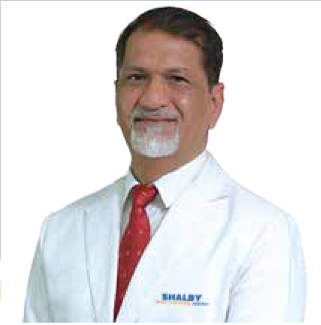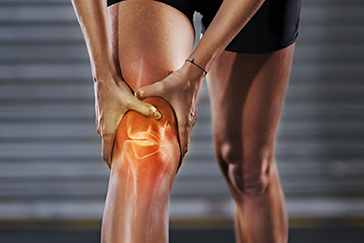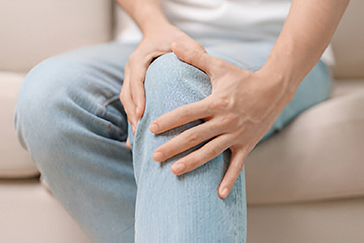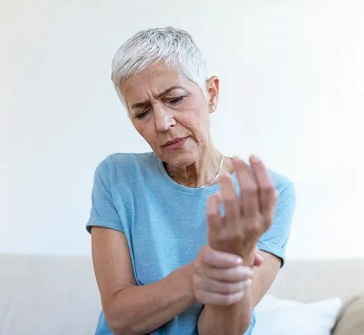 Book Appt.
Book Appt.
 Call Now
Call Now


Tennis elbow is a condition that causes pain and inflammation in the elbow. It is typically a repeated strain injury. Repetitive strain injuries occur when you repeatedly use a part of your body to perform the same activity, causing tissue damage. Tennis elbow derives its name from the fact that it is a prevalent sports injury among tennis players and other racket sports participants. It occurs when you overuse the tendon that joins your forearm muscles to your elbow (extensor muscle tendon).
Tennis elbow is referred to medically as lateral epicondylitis. Epicondylitis is inflammation of the extensor muscle tendon. Lateral epicondylitis refers to inflammation on the lateral side—the outside edge when you hold your arms at your sides, palms facing forward, in the same direction as your eyes.
Symptoms
Causes
Tennis elbow can be caused by any repetitive motion or activity. Extra stress from repetitive actions accumulates over time. Eventually, the increased use and tension on your extensor muscle tendon generates microscopic rips (microtrauma). Microtraumas create palpable and noticeable symptoms. Tennis elbow can also be caused by a sudden arm or elbow injury; however, this is less common.
Risk factors
Tennis elbow can affect everyone; however, some people are at a higher risk, such as those who:
Athletes that perform sports that place stress on their arms or elbows, including:
Diagnosis
Tennis elbow will be diagnosed by a healthcare expert after a physical exam and several testing. They will check your injured elbow and inquire about your symptoms. Tell your doctor when you first felt pain, stiffness, or other symptoms, and whether any activities made them worse (or better). Your provider may employ the following tests to check for damage inside your arm and photograph your elbow:
Treatment
Your provider will recommend treatments to help your tendon heal. The RICE method is typically the best way to treat tennis elbow.
Other nonsurgical (conservative) therapies for tennis elbow include over-the-counter (OTC) pain medications, physical therapy, brace wear, platelet-rich plasma, corticosteroids, tenotomy, and shockwave therapy.
Prevention
The most effective way to avoid tennis elbow is to avoid overusing your arm and elbow. During sports and other physical activities:
Conclusion
Tennis elbow is a condition that affects anyone who frequently moves their wrists and arms. Tennis elbow can be painful and unpleasant, but the majority of cases can be effectively treated with rest, physical therapy, and lifestyle adjustments. If symptoms persist or worsen, see a doctor to consider alternative therapy choices. With proper care and attention, most people can recover from tennis elbow and resume their normal activities without pain. Visit SHALBY Sanar International Hospitals to learn more.
SHALBY Sanar International Hospitals provides extensive medical procedures backed up with our state-of-the-art technology and a team of highly qualified & experienced clinical experts.



Life Transformed: Mr. Blojah Felix Journey to Pain-Free Living | SHALBY Sanar

Pain-Free Living After 6 Years: Knee Replacement Success Story | Dr. Rohit Lamba

Bilateral Total Knee Replacement by Dr. Vikram Shah | SHALBY Sanar International Hospitals

Remarkable Recovery Story: Hip Replacement for Non-union Fracture

Incredible Recovery Story: Bilateral Knee Replacement Transformation

Knee Replacement Surgery by Dr. Rohit Lamba: 60-Year-Old's Remarkable Recovery

Renewed Hope: Successful Hip Replacement Surgery Transforms Iraqi Patient's Life

Exploring a Case of Revision Knee Replacement: Insights from Dr. Rohit Lamba

Triumphant Journey: Ms. Fatima, 69, Triumphs Over Revision Knee Replacement Surgery

Leaving the crutches behind – Riyaz, 43, gains confidence after a successful Hip Replacement Surgery

Transformative Total Knee Replacement Surgery: A New Lease on Life for 48-Year-Old Ramesh

Miraculous Recovery: 17-Year-Old Kenyan Overcomes Osteosarcoma with Mega Prosthesis Surgery

Mr. Omar Faruk's Remarkable Knee Recovery: ACL Reconstruction Success Story

Mrs. Vijay Luxmi's Remarkable Knee Replacement Journey

Umidjon, 36, from Uzbekistan shares his gratitude for a successful total hip replacement surgery

Ms. Mohsin from Iraq shares her gratitude for a successful Computer Navigated Total Knee Replacement

A Total Hip Replacement surgery gives Ms. Barry from Ghana, the ability to walk again.

Dr. Rohit Lamba talks about a successful Hip Replacement Surgery carried out on an Iraqi patient
Our doctors pen down their research findings and experiences from time to time. Their words provide deep insight into the latest techniques, technologies and other advancements in healthcare. It provides expert answers to all kinds of health questions for real-life issues.
VIEW ALL.png)
.png)



Since the day of its foundation, SHALBY Sanar International Hospitals is committed to provide comprehensive healthcare services. It regularly organizes awareness programs in its premises and encourages outdoor healthcare activities and camps with an intent to put focus on preventive healthcare.
VIEW ALL